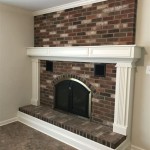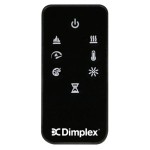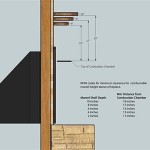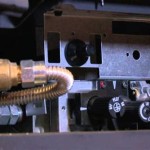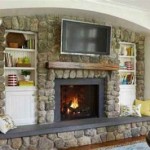LP Fireplace Inserts: Exploring the Ventless Option
Liquid Propane (LP) fireplace inserts offer a viable alternative to traditional wood-burning fireplaces, providing warmth and ambiance with increased efficiency and ease of use. Among LP fireplace insert types, ventless models have gained considerable attention due to their perceived simplicity of installation and operation. However, understanding the nuances of ventless LP fireplace inserts is crucial before making a purchase decision. This article will explore the features, benefits, drawbacks, and safety considerations associated with ventless LP fireplace inserts.
Standard vented fireplaces require a chimney or flue to expel combustion byproducts, including carbon monoxide, water vapor, and other gases. Ventless fireplaces, conversely, are designed to burn fuel more completely, minimizing these byproducts and eliminating the need for external venting. This attribute makes ventless models attractive to homeowners who lack existing chimney infrastructure or who seek easier and more cost-effective installation.
The operation of a ventless LP fireplace relies on an Oxygen Depletion Sensor (ODS). This sensor continuously monitors the oxygen levels in the room. If the oxygen level drops below a predetermined threshold, indicating a potential buildup of combustion byproducts, the ODS will automatically shut off the gas supply to the fireplace, preventing the release of harmful gases. This safety mechanism is integral to the safe operation of ventless LP fireplace inserts.
Understanding Heat Output and Room Size
One of the primary considerations when choosing an LP fireplace insert, ventless or vented, is heat output. Measured in British Thermal Units (BTUs), heat output dictates the fireplace's capacity to effectively heat a specific area. Ventless LP fireplace inserts are typically available in various BTU ratings. Selecting an appropriate BTU rating for the room is crucial. A fireplace with too low a BTU rating will not adequately heat the space, while one with too high a BTU rating can lead to overheating and discomfort.
Manufacturers provide guidelines regarding the appropriate room size for specific BTU ratings. It's essential to consult these guidelines and accurately assess the square footage of the room where the fireplace will be installed. Factors such as ceiling height, insulation levels, and the number of windows can also influence the heating requirements. Rooms with high ceilings or poor insulation will require a higher BTU output compared to well-insulated, smaller spaces. Professional consultation can help determine the optimal BTU rating for specific circumstances.
The efficiency of heat distribution within the room is also influenced by the fireplace's design and placement. Some ventless LP fireplace inserts incorporate fans or blowers to circulate warm air more effectively. Placing the fireplace in a central location can also enhance heat distribution. Careful consideration of these factors can maximize the heating performance of the ventless LP fireplace insert.
Safety Considerations and Regulatory Compliance
While ventless LP fireplace inserts are designed with built-in safety features such as the ODS, it is imperative to understand the associated safety considerations. Proper installation, regular maintenance, and adherence to manufacturer guidelines are paramount for safe and reliable operation. Improper installation can compromise the safety mechanisms and increase the risk of carbon monoxide poisoning or fire hazards.
Carbon monoxide is a colorless, odorless, and highly toxic gas produced during incomplete combustion. While ventless LP fireplace inserts are designed to minimize carbon monoxide production, they do not eliminate it entirely. A properly functioning ODS will shut off the fireplace if carbon monoxide levels rise to dangerous levels. However, relying solely on the ODS is not sufficient. Installing carbon monoxide detectors in the vicinity of the fireplace is essential for early warning in case of malfunctions or elevated carbon monoxide levels.
Building codes and regulations governing the installation and use of ventless LP fireplace inserts vary depending on location. Some jurisdictions restrict or prohibit the use of ventless fireplaces due to concerns about indoor air quality and potential safety hazards. Before purchasing a ventless LP fireplace insert, it is crucial to consult local building codes and obtain any necessary permits. Failure to comply with local regulations can result in fines, legal repercussions, and potential safety risks.
Regular maintenance is also crucial for ensuring the safe and efficient operation of ventless LP fireplace inserts. This includes cleaning the burner assembly, inspecting the ODS for proper functioning, and checking the gas connections for leaks. Following the manufacturer's recommended maintenance schedule will help prevent malfunctions and extend the lifespan of the fireplace.
Advantages and Disadvantages of Ventless Technology
Ventless LP fireplace inserts offer several advantages over traditional vented models. The most significant advantage is the ease of installation. Since they do not require a chimney or flue, ventless fireplaces can be installed in virtually any room in the house, offering greater flexibility in placement. This can result in significant cost savings compared to installing a vented fireplace, which often requires extensive renovations to accommodate the venting system.
Ventless fireplaces are also generally more energy-efficient than vented fireplaces. Vented fireplaces lose a significant portion of their heat through the chimney or flue. Ventless fireplaces, on the other hand, release all of their heat into the room, resulting in higher heating efficiency. This can translate to lower heating bills, especially in homes where the fireplace is used frequently.
However, ventless LP fireplace inserts also have some disadvantages. One of the primary concerns is the potential impact on indoor air quality. While ventless fireplaces are designed to burn fuel cleanly, they still produce some combustion byproducts, including water vapor and small amounts of carbon monoxide, nitrogen dioxide, and other gases. These byproducts can contribute to indoor air pollution, especially in poorly ventilated homes. Proper ventilation is essential to mitigate these effects. Opening a window or using an exhaust fan can help to remove excess moisture and pollutants from the air.
Another disadvantage is the potential for moisture buildup. Ventless LP fireplaces produce water vapor as a byproduct of combustion. In small, poorly ventilated rooms, this can lead to increased humidity levels, which can promote the growth of mold and mildew. Monitoring humidity levels and using a dehumidifier can help to control moisture buildup.
Furthermore, some individuals may experience sensitivities to the combustion byproducts produced by ventless LP fireplaces. Symptoms can include headaches, nausea, and respiratory irritation. If these symptoms occur, it is important to discontinue use of the fireplace and consult a medical professional.
The aesthetic appeal of ventless models is another consideration. While some ventless LP fireplace inserts offer realistic flame patterns and log sets, they may not replicate the look and feel of a traditional wood-burning fireplace as closely as some vented gas fireplace inserts. The choice between a ventless and vented model often comes down to a balance of practicality, safety, and aesthetic preferences.
Ultimately, the decision of whether to install a ventless LP fireplace insert requires careful consideration. Weighing the advantages of easy installation and energy efficiency against the potential risks to indoor air quality and moisture buildup is crucial. Consulting with a qualified HVAC professional or fireplace installer can provide valuable insights and help ensure that all safety requirements and building codes are met. Careful planning and responsible operation will maximize the benefits and minimize the risks associated with ventless LP fireplace inserts.

Procom Universal Ventless Firebox 170016 The Home Depot

Duluth Forge 36 In Ventless Dual Fuel Fireplace Insert With Remote Control Fdi32r The Home Depot
:max_bytes(150000):strip_icc()/ventless-gas-fireplaces-4160746-hero-f9d4bdcd9bd446eb84406de306f790ba.jpg?strip=all)
How To Pick Out A Ventless Gas Fireplace

Pleasant Hearth Universal Circulating Zero Clearance 42 In Ventless Dual Fuel Fireplace Insert Phzc42c The Home Depot

Duluth Forge 26 000 Btu Dual Fuel Ventless Gas Fireplace Insert With Remote Com

Napoleon Gvfl24 Ventless Gas Log Set 24 Inch

Vent Free Inserts White Mountain Hearth

Read Reviews And Buy The Best Fireplace Inserts From Top Brands Including Duluth Napoleon Em Gas Insert Propane Ventless

Gas Fireplace Inserts Pros And Cons Of Ventless Fireplaces

Fireplace Inserts 3 Reasons To Consider One Euliss Propane In Nc
Related Posts

